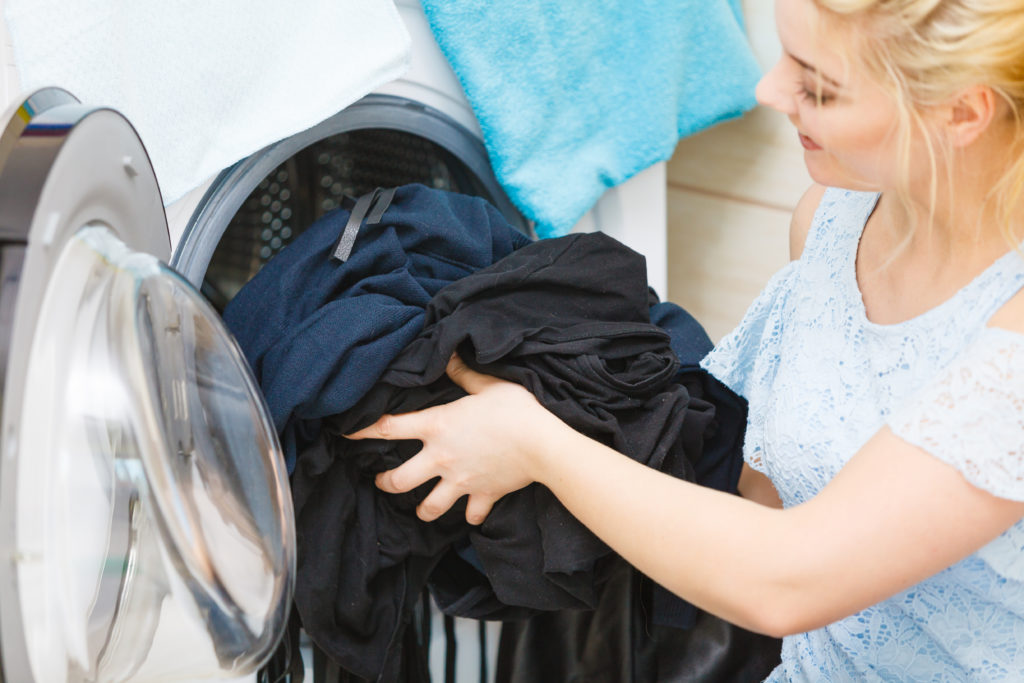
Do I Really Need to Separate Whites and Darks?
It’s an age-old fear: you go to move your linens from the washer to the dryer, only to discover a singular red sock snuck through and turned the entire batch pink! Sorting whites and darks is a practice as old as laundry. It’s meant to prevent the discoloration of white clothes, but is it really that big of a deal? Today, some people swear by mixing laundry batches, regardless of color. Let’s take a look at some of the reasons for and against sorting laundry.
Color
The most significant benefit to separating whites and darks is the elimination of color transfer. Brightly-colored clothes have a tendency to bleed onto other fabrics in the washing machine. New clothes, in particular, tend to transfer color, because they often have surplus dye that seeps out of the fabric when washed. Because of this, it’s a good idea to separate at least your whites from your brand-new colored clothing the first time you wash them.
As you may have experienced at some point, color transfer can be immediately obvious, but, often, it doesn’t happen right away. However, dark clothes can erode the brightness of your whites over time, leaving them dull and gray. Separating the two into different loads can ensure that your whites stay bright.
Even if your whites fade from color transfer, there are many hacks for brightening them up again. Soaking your light colors in a stain remover like the Oxygen Bleach from Charlie’s Soap before washing them can help restore them to their original color.
Temperature
Another reason to separate laundry is so you can customize the water temperature of the washing cycle. It’s a long-standing laundry tip to wash whites and darks in different temperatures. Typically, whites and other light-colored clothes should be washed in warm or hot water, and colored items should be washed in cool. Warm water is supposed to give your whites a deeper clean to bring that white t-shirt back to its former glory, and cool water is effective for darks because it prevents color transfer. However, high-temperature washing and drying can damage your clothes in the long term.
Heat weakens a fabric’s fibers. Washing and drying on high heat can shorten any fabric’s lifespan and cause significant shrinkage over time. So, for the longest-lasting fabrics, you’ll actually want to avoid anything hotter than lukewarm water, and cold water is recommended. Washing with cold water is also better for the environment, which is a priority at Charlie’s Soap. To help reduce your carbon footprint, you try sticking with cold-water washing and using our detergents. Our Natural Liquid Laundry Detergent is formulated to work just as well in cold water as in hot.
Product
Separating laundry by color also lets you use different products for different fabrics. For example, if you have white linens that you want to brighten, you may want to add an additional stain treatment, like bleach. Chlorine bleaches can damage colors, so it’s best to avoid washing darks in the same load. Besides, chlorine bleaches contain harsh chemicals that can irritate skin and alter the texture of your fabrics. A non-chlorine alternative is safer and better for your clothes. The non-chlorine Oxygen bleach from Charlie’s Soap is even color-friendly, so you could save time by sanitizing whites in the same load that you wash darks.
Final Verdict
Sometimes, it’s more valuable to sort according to fabric type than color. A pair of black yoga pants might require more sanitization and stain treatment than a white sundress. Whether pastel lavender or navy, lingerie, and wool sweaters may need to be washed and dried differently. It’s best to refer to the care label on your clothes for the best treatment.
While sorting laundry isn’t absolutely necessary, it can be beneficial for limiting color transfer and customizing your washing cycle. Either way, check out Charlie’s Soap laundry products; we’ve got what you need, no matter how you sort it.

Leave a Reply